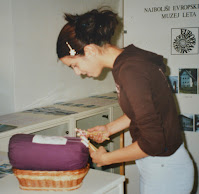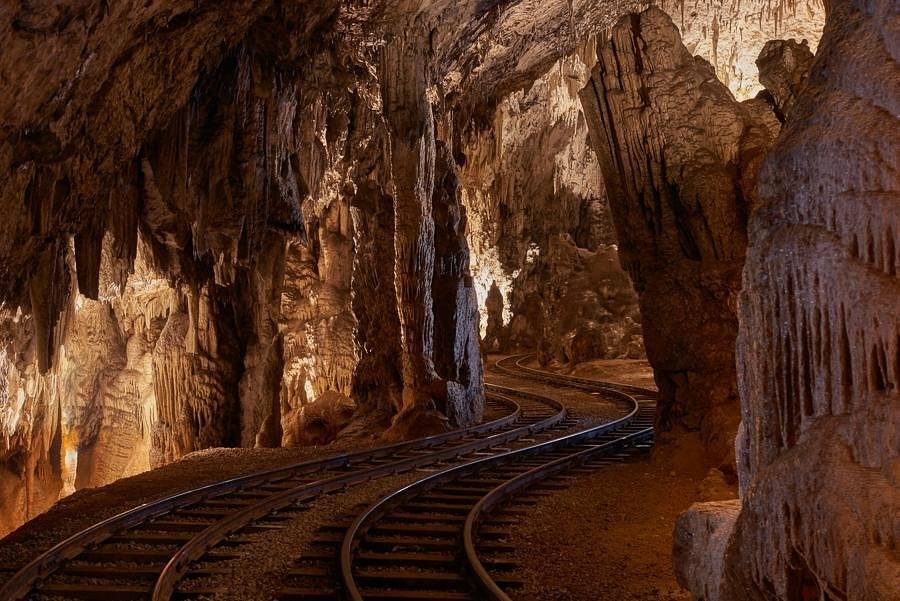A friend who was planning her next travel adventure asked me recently to recommend a country I'd enjoyed. Without hesitation I said 'Slovenia'. 'Oh, I'm not even sure I know where that is', she replied. I can't say I blame her. We visited in 2001 and, almost 25 years later, Slovenia still flies under the tourism radar. It's a pint-sized country, far smaller than Tasmania and with a population about the same as Brisbane. It's surrounded by bigger, attention-seeking countries such as Italy, Austria, Hungary and Croatia.
But what it lacks in size and recognition, it makes up for in spectacular snow-capped mountains, Alpine villages cradled in lush green valleys, spring-fed lakes, aquamarine rivers gushing and rushing through gorges, fairytale castles, friendly people and ice creams! Feeling nostalgic, I reached for my photo albums (pre digital technology here) and my trusty diary and settled in to revisit this lovely country. Photos are a combination of mine and Steve's.
We began our journey in the capital Ljubljana nestled alongside the peaceful Ljubljanica River. It's a university town so lots of young people, gorgeous pastel-coloured baroque architecture, narrow, cobbled pedestrian-only streets, elegant shops and equally elegant people, and all the statues and plaques in the squares and parks were of cultural figures - poets, writers, playwrights, musicians - not a politician, soldier or founding father among them. Yay for culture! And everyone was eating an ice cream.

We ambled through the market ...
 |
| A mushroom seller |
... popped into a church...
... wandered along the riverbank...
.. spotted this church door - so intriguing and playful...
.. and visited Lljubljana castle.
 |
| A view of Lljubljana from the castle. |
We hired a car and set off into the countryside. Off the main highway, the 'road less travelled' took us through alpine valleys with picture-perfect views of cosy farmhouses set within lush green fields, their windows ablaze with red geraniums.
Climbing higher, we were soon surrounded by high, thickly forested hills. Zigzagging even higher we could see tiny villages below us. The red-gold autumn leaves of the linden, aspen and alder trees were spectacular.
 |
| Here a quince tree frames the view. |
Down into a valley again and making for the town of Kopra we came across a raging river tumbling over boulders.
Kopra was once the centre of iron and still has an active forge and wrought iron industry.
 |
| An ironmonger works on part of a fence. |
Our next destination was Lake Bled, one of the major attractions in Slovenia. In the centre of the clear, placid blue water is an island with a church, while in the background, high on the cliffs overlooking the lake is a medieval castle. A boatman will row you out to explore this tiny island.
 |
| A fairytale castle on the clifftop. |
 |
| Autumn foliage captivates us around Lake Bled. |
We crossed the river and walked through a steep and winding forest path to approach the castle. Over a drawbridge, up a steep cobbled path and then through the large, imposing wooden doors. The views from the courtyard were wonderful.
About 5kms from the town of Bled is the Vintgar Gorge. A winding wooden walkway takes you alongside the turbulent river which rushes along in thunderous eddys and swirls, over boulders, around bends, under bridges and between narrow rocky gorges. In all, it is a spectacular experience. We were lucky to be here in autumn with the vivid golds and reds of the leaves providing a perfect backdrop to the creamy aquamarine colour of the water. The river began placidly....
... then picked up speed as it tumbled on its way. The walkway was perilously close, making you feel that you are part of this amazing landscape.
 |
| Spot the walkway in this photo. |
The following day we ventured into the Julian Alps, travelling through villages nestled in rolling green hills with steep rocky crags on either side of the narrow road, cowbells jangling from the necks of sturdy Alpine cattle, hay ricks dotted in the fields, the rich russet-red leaves of the chestnut trees mingling with the vivid green of the pine trees.

 |
| Steve waves a greeting. |
We stopped in a meadow where we found a little cottage, locked for the winter. It was all so fairytale-ish I would not have been surprised to see the witch from Hansel and Gretel appear around a corner and disappear into the gloomy forest beyond the meadow.
The next day we headed to the mountain pass at Vrsic. Mountains seemed to envelop us.
Down into a valley, with amazing landscapes at every turn of the winding mountain road. The villages we drove through here were centres for hiking, rock climbing, canoeing and paragliding. Next stop was at Kobarid, the town famous for being the staging point for the Italian army in World War 1; it was called Caparetto then. It was here that a 19-year-old volunteer ambulance driver (by the name of Ernest Hemingway) was stationed. Hemingway based his novel Farewell to Arms here. We saw his house and visited the museum which tells the story of the Italian campaign.
The next day I recorded in my diary.' This morning mist hung in the valley, swirling around church steeples and forming a river of cotton wool'. A pretty accurate description I have to say.

Another breathtaking sight with the mist still lurking in the valley was the Napoleon Bridge, an arched stone bridge spanning the Soca River.
We drove through a number of villages before stopping in the town of Idrija where we had booked a room in a 15th century manor house. It's a former mining town (a tub maker discovered mercury here in 1490). In addition, a lace school was established to promote the women's traditional craft, with the lace being exported throughout Europe. My favourite part was the visit to the lace museum. On the walls were examples of all kinds of exquisite lace patterns. I learnt about the 'bula', a stuffed cushion on which the pattern is placed. Bobbins are used to make the pattern. (This made me remember the bobbins my mum had as she used to do tatting, a form of lacemaking.)

 |
| A guide showed me how it was done! |

On the road again making for Lipica. We were now in the lowlands and being closer to Italy had a more Italian feel; all the houses had brightly coloured shutters, paint-faded facades and flowers oozing from window boxes and tubs. We visited a stud that used to supply the famous Lippanzer horses to the Spanish Riding School in Vienna (it no longer does this), but it was lovely to see the gorgeous grey and white horses gambolling or lazing in the lush fields bordered by trim white fences. A guide showed us some horses in their stalls.

By lunchtime we were in Piran, a delightful resort town clinging to the Adriatic and the Italian border. The main square was marbled and was surrounded by villas painted in hues of blue, pink, green, mustard.
Narrow streets led off the square, often with washing strung across the alleys. We climbed a bell tower and were rewarded with a fantastic view across red-tiled rooftops to the port.
We were nearing the end of our trip but had two more 'must-see' places to visit: Predjama Castle and Postojna Caves. The castle was magnificent - built into the side of a rocky hill, it had everything a medieval castle should have: a drawbridge, a torture chamber, tunnels, slots for pouring burning oil on the enemy, holes for cannons. The many rooms were sensitively decorated for the times with mannequins dressed as knights, friars, ladies, evoking a feeling of the past.


We then went on a guided tour of the cave behind the castle - rather spooky with the eerie darkness only lit by an occasional light and the feeling that we were deep underground.

We then headed off to visit the Postjana caves, the largest cave system in Europe. It was an experience I've never forgotten, though I had to resort to my diary to feel the sheer wonder of it all again. I'm not one for pokey caves (Predjama's Castle cave was claustrophobic enough for me). Our hearts sank when we arrived at the entrance with about 200 other tourists and sat in an open carriage in a very long 'train'. Oh boy, we thought - 'Disneyland'. But what a surprise we got. We sped along at a fairly fast pace through the cave system. The carriages made their way through cavern after cavern, passing magnificent stalactites, stalagmites, flows, columns, and aquamarine pools in a never-ending extravaganza. The sheer size of everything was overwhelming. At times we were incredibly close to the formations and other times the roof soared metres overhead. After about 4kms or so we stopped and were asked to head to the appropriate language sign. At the 'English' sign, a guide then took us for a walking tour that was informative, exciting and wonderful - all at once. The sheer expanse of the place took my breath away. A huge cavern is called the Concert Hall and it is here that they hold musical events. I can only imagine what those must be like. There are no photos as Steve didn't have a flash and my camera could not take in the sheer majesty of what I was seeing. We bought a book instead. That book is packed away somewhere. My next project is to find it! These photos are taken from the Trip Advisor website and were taken by the cave management.
My final photo is one that I think sums up Slovenia for me. A beautiful country.
And happy memories for us.

















































I don't think I've been to Slovenia before. The early 2000s were a dark time for me. I wasn't even blogging before 2010.
ReplyDeleteYou're right. Slovenia looks magical. XXXX